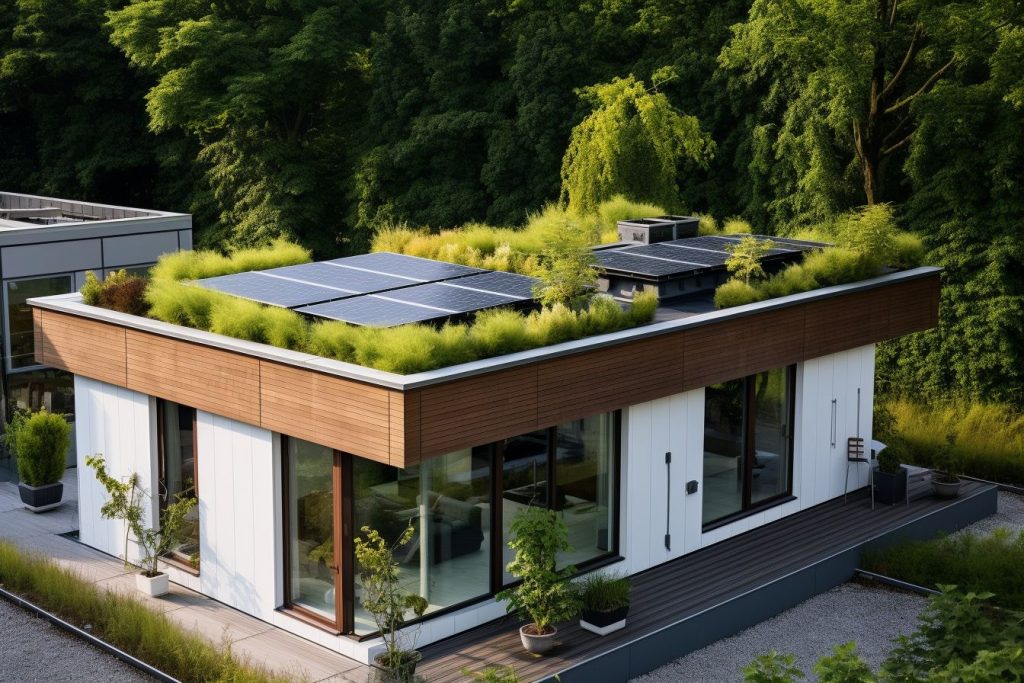Changing weather patterns have many homeowners keen on finding energy-efficient home strategies. Did you know that the type of roofing used can significantly influence your home’s energy efficiency? In this article, we aim to guide you through various energy-efficient roofing options and how they can save costs on your energy bills in the long run.
Ready to discover a cooler, greener way to the roof? Let’s dive right in!
Key Takeaways
- Metal roofing is a durable and efficient option for energy-efficient roofs, reducing cooling costs by up to 40%.
- Energy Star-rated asphalt shingles are affordable, significantly reducing heat absorption and improving home insulation.
- Tile roofing offers impressive energy efficiency due to its durable nature and thermal properties that limit heat transfer into the building.
- Solar shingles combine the protective qualities of regular shingles with renewable energy generation, although they come at a higher cost.
Types of Energy-Efficient Roofing Options
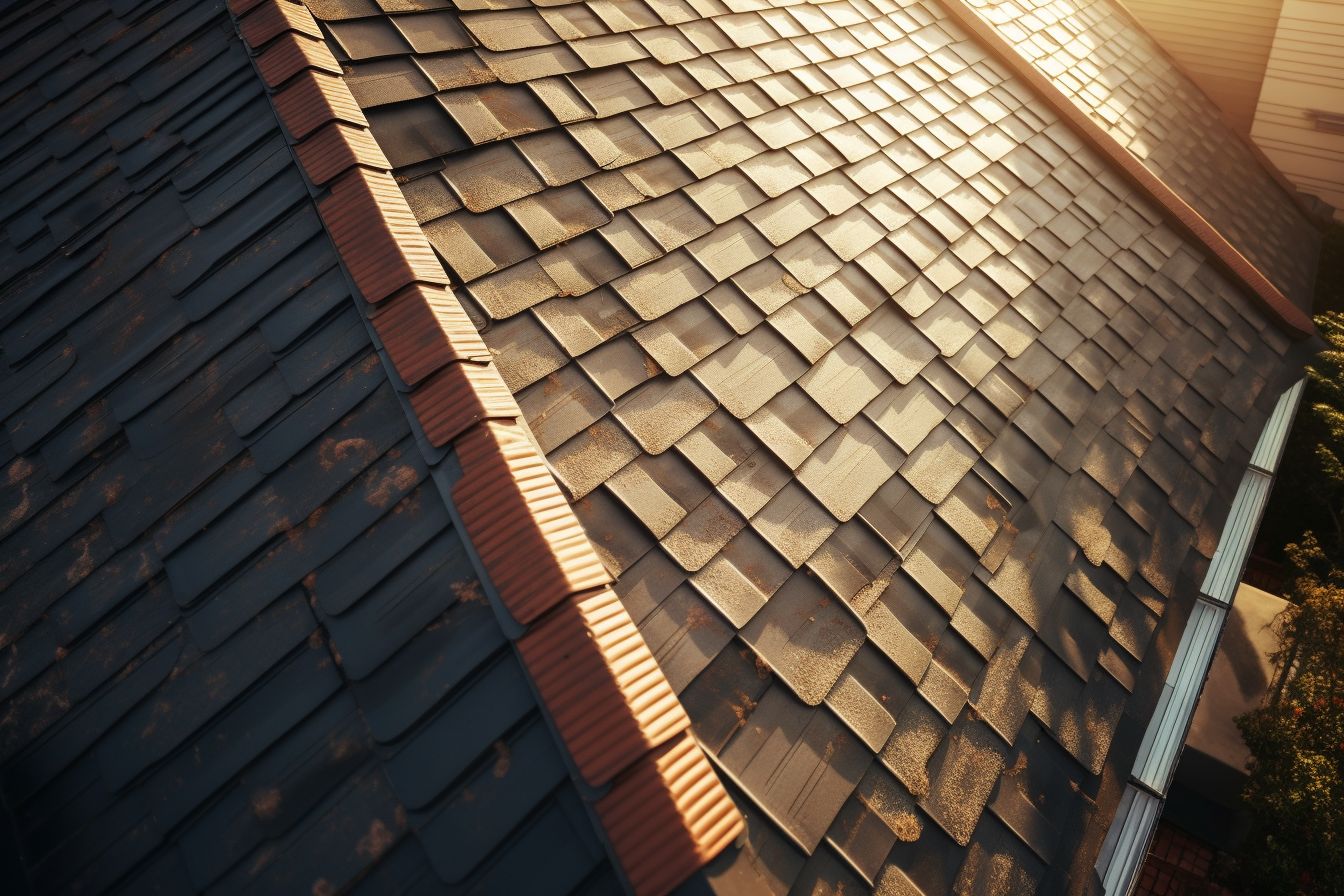
Several types of energy-efficient roofing options are available, including metal roofing, asphalt roofing, tile roofing, and solar shingles.
Metal Roofing
Metal roofing stands as a crucial part of energy-efficient roofing options. Its distinctive property of reflecting heat away significantly reduces cooling costs, making it an effective solution for homeowners wishing to save up to 40% on their energy bills.
Despite its cost-effectiveness, durability isn’t compromised; metal roofs have proven longevity and require minimal upkeep. This demonstrates why it’s a high-performance choice among environmentally friendly, long-lasting roofing systems.
Further enhancing its appeal is that this type of roof is recyclable, contributing positively towards sustainable living trends while maintaining aesthetic charm in residential areas.
Asphalt Roofing
Asphalt shingles serve as a popular choice for energy-efficient roofing options. Known for their durability and affordability, most homes utilise this widespread material in roofing design.
However, traditional asphalt shingles tend to absorb heat rather than reflect it, increasing the burden on home appliances during warmer days.
Technological advancements have led to the development of Energy Star-rated asphalt shingles. These upgraded versions exhibit higher energy efficiency than their regular counterparts by reducing heat absorption significantly.
The installation process of an asphalt roof is comprehensive; it includes underlayment alongside other elements to enhance home insulation and overall energy efficiency.
Tile Roofing
Tile roofing is a fantastic choice for energy-efficient roofing due to its distinct properties. Its durable nature makes it one of the most long-lasting roof options available.
Clay and concrete, often used in tile roofs, contain thermal properties, significantly reducing energy consumption. They limit heat transfer into the building, thus assisting with heat reduction and creating an eco-friendly environment inside your dwelling.
Numerous research studies confirm the impressive energy efficiency of tile roofs, making them a popular pick amongst sustainable roof materials.
Solar Shingles
Solar shingles merge a roof’s protective qualities with solar panels’ renewable energy potential. Nestled discreetly amidst traditional roofing materials, they offer homeowners an aesthetically pleasing way to generate electricity.
Brands like Luma, CertainTeed, Suntegra, Tesla, and GAF Energy lead in this area. However, these photovoltaic tiles come at a higher price than regular shingles — about $25,000 to $60,000 on average.
The downside is that inadequate ventilation makes them less efficient than their bulkier counterparts. Regardless of efficiency sacrifice for sleek design appeal, solar shingles remain popular for those wanting cost-effective sustainability in their home improvements.
How to Choose an Energy Star Roof
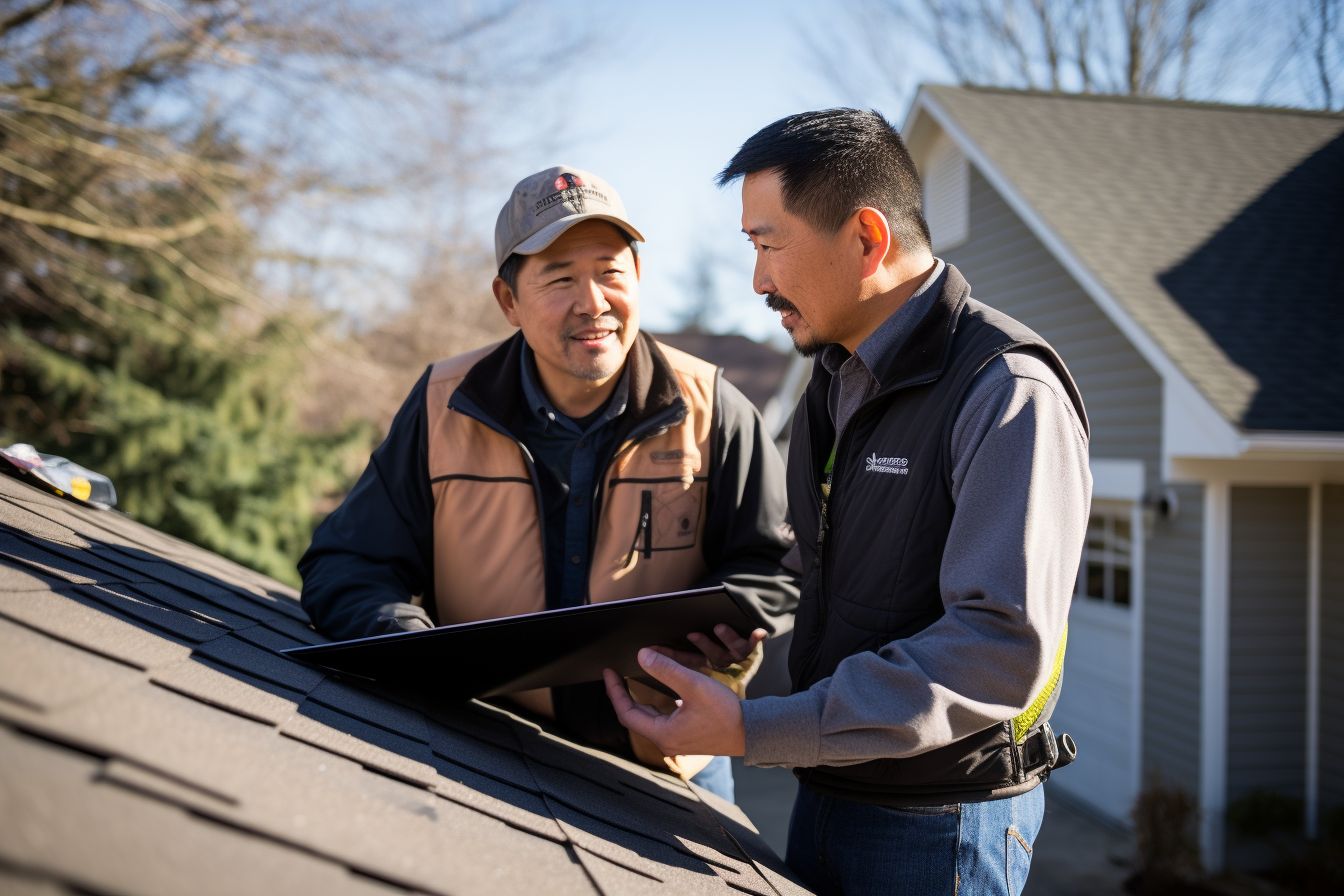
Choosing an Energy Star roof demands careful consideration and informed decision-making. Here are the steps you need to follow:
- Research on energy-efficient roofs, utilising resources like a homeowners guide.
- Evaluate your home’s climate needs, considering hot weather roofs for warm climates.
- Ask about the Energy Star rating of various roofing materials from your roofer.
- Look for roofs that reflect more sunlight for lower building temperatures.
- Consider cool roofs if your location experiences intense sun and your current roof lacks insulation.
- Factor in potential energy savings from Energy Star-rated materials such as asphalt shingles.
Benefits of Energy-Efficient Roofing
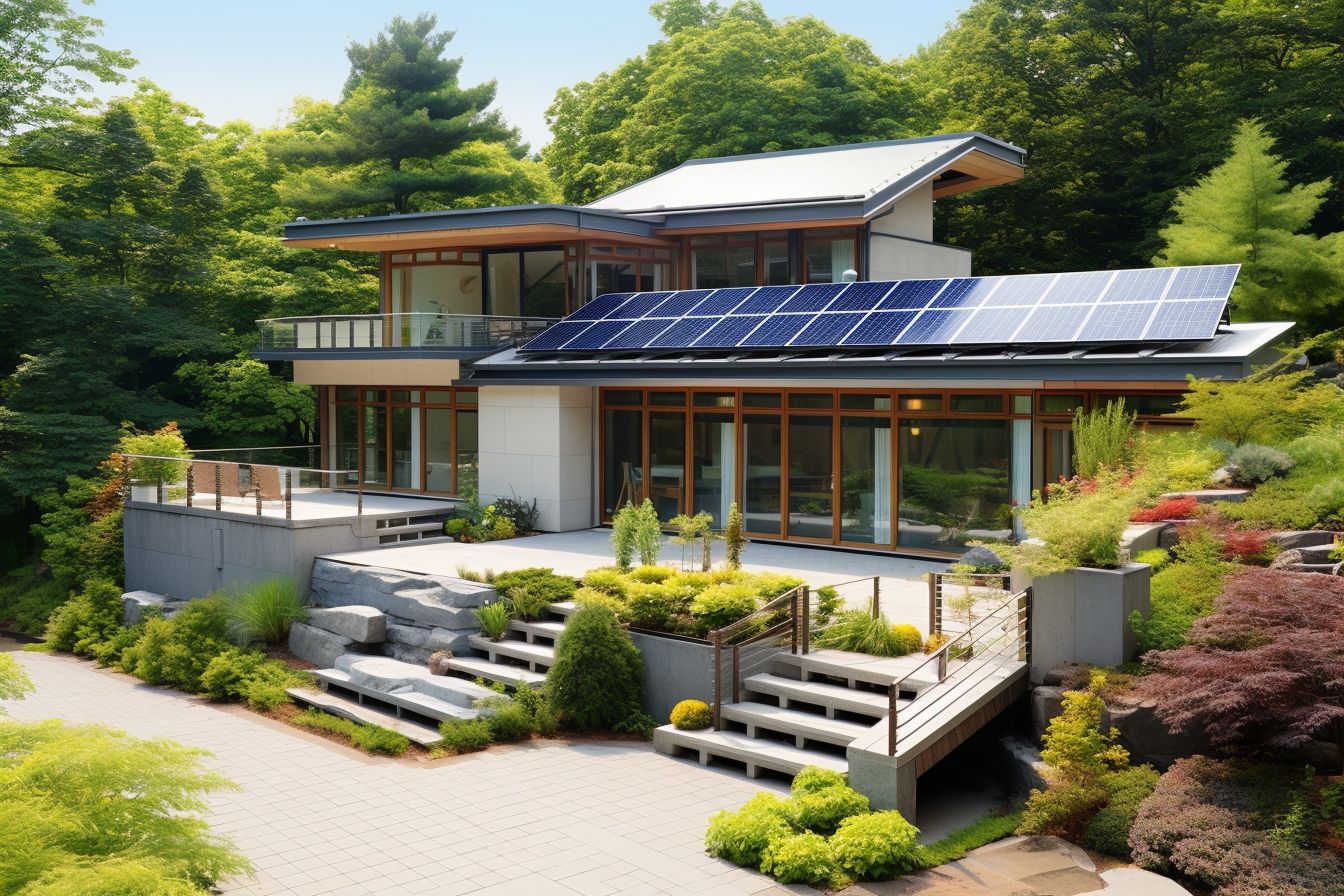
Energy-efficient roofing offers several benefits, including decreased energy bills, environmental benefits, and improved home comfort.
Decreased energy bills
Switching to energy-efficient roofing options significantly cuts down your household’s cooling costs. With such roofs, the reliance on air conditioning systems lowers, thus reducing energy consumption and lowering your electricity bills.
Cool roofs, an energy-saving roofing system, reflect more sunlight and absorb less heat than standard ones. This leads to decreased indoor temperatures and less demand for cooling inside the house.
You’ll also get financial benefits if you choose an ENERGY STAR-certified roof or other qualifying materials, as they often have rebates attached. It’s easy to see why these cost-effective roofing choices are becoming increasingly popular among homeowners looking for sustainable renovation solutions.
Environmental benefits
Energy-efficient roofs make a significant contribution to reducing carbon footprint. They absorb harmful pollutants and greenhouse gases, including carbon dioxide, supporting efforts towards pollution reduction.
Alongside cleaner air, these sustainable roofs also help manage stormwater by absorbing and filtering runoff before it enters local water systems.
Moreover, the natural insulation provided by energy-efficient or green roofing aids in controlling indoor temperatures. This decreases the need for air conditioning, thereby reducing cooling demand significantly.
Thus contributing not only cost savings but also less energy usage overall on a larger environmental scale.
Improved home comfort
Energy-efficient roofs, such as cool roofs, can greatly enhance the comfort of your home. These roofs are designed to reflect more sunlight and absorb less solar energy, effectively lowering the temperature inside your house.
Cool roofs provide better thermal comfort and prevent overheating by reducing heat absorption. This is especially beneficial for buildings with low roof insulation levels because it helps keep the interior cooler during hot summers.
With an energy-efficient roof, you can enjoy a more comfortable living space without relying heavily on air conditioning, improving overall comfort and lowering energy bills.
Considerations for Choosing Energy-Efficient Roofing
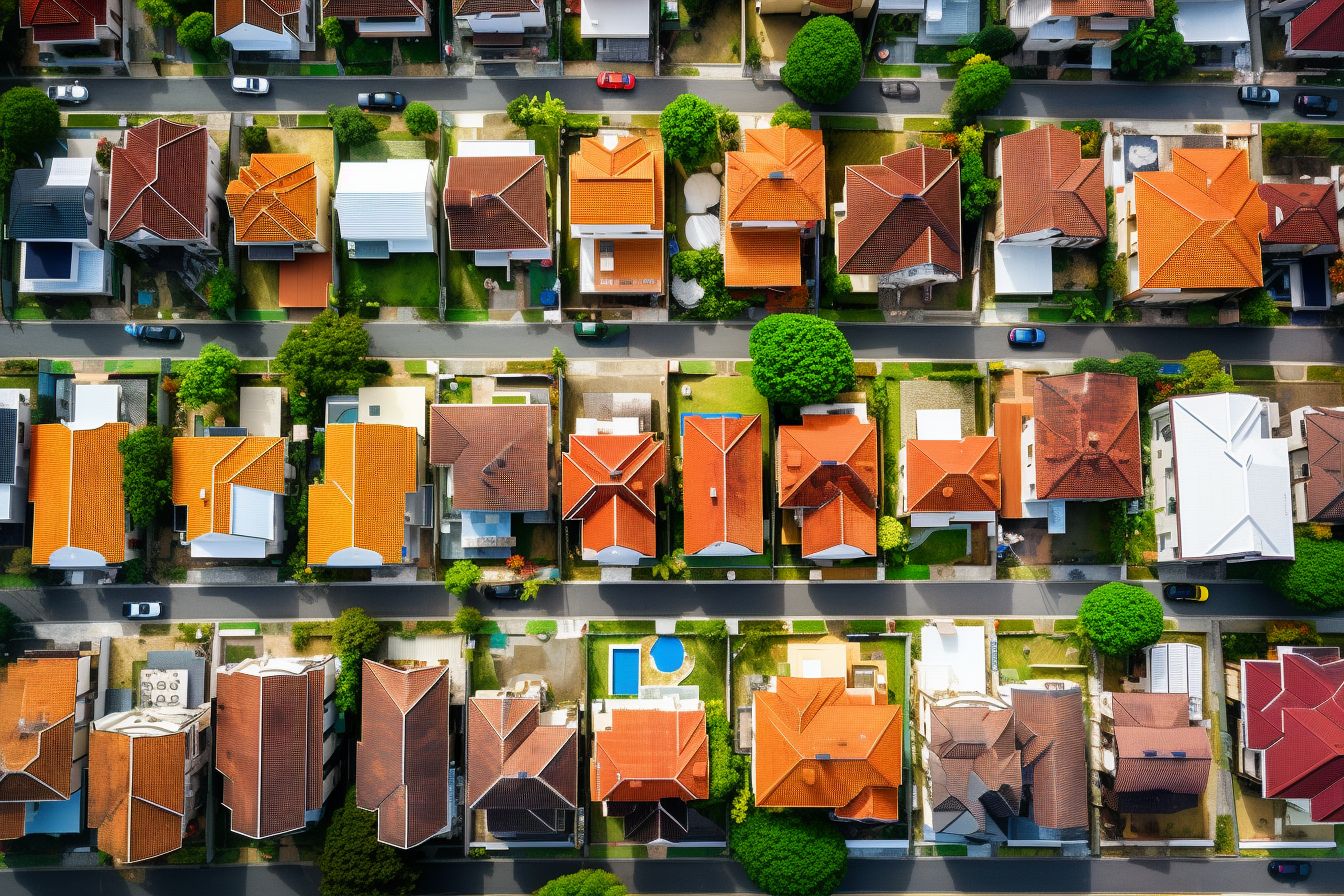
Consider the cost, roof slope, climate, and ventilation when selecting an energy-efficient roofing option.
Cost
Energy-efficient roofs may require a higher upfront investment compared to traditional roofing options. The cost of cool roofs, which reflect more sunlight and reduce heat absorption, typically ranges from $6,500 to $10,000 for 1,500 square feet.
Green roofs that promote vegetation and provide insulation can cost between $10,000 and $20,000 for the same area. It’s important to note that different energy-efficient roofs have varying costs depending on the materials used and installation requirements.
However, the long-term benefits of energy savings and reduced environmental impact make it worthwhile. In addition, incentives such as tax credits are available for installing energy-efficient roofs that can help offset some of the initial costs.
Roof slope
A roof slope refers to the angle or pitch of a roof. It is an important consideration when choosing energy-efficient roofing materials. Generally, low-sloped roofs, which have a pitch less than or equal to 2:12, are best suited for cool roof materials.
Sloped roofs offer more versatility in selecting roofing materials and colours that optimise cost efficiency and energy performance. The slope of a roof can also impact the selection of materials that provide optimal insulation and ventilation for better energy efficiency.
So, when considering energy-efficient roofing options, be sure to take into account the slope of your roof.
Climate
Cool roofs are most effective in hot, sunny climates like the Southern United States. These reflective roofs help to reduce energy consumption by reflecting sunlight and heat away from the building.
Keeping the roof cool can help mitigate the urban heat island effect and improve overall energy efficiency in warmer regions. It is important to consider the climate when choosing a roofing option for your home, as different materials offer varying benefits depending on your environment.
Ventilation
Proper ventilation is an important consideration when choosing energy-efficient roofing. It is crucial in maintaining airflow and climate control within the home. A well-ventilated roof helps regulate temperature and improve thermal efficiency, reducing excessive heating or cooling.
Additionally, it aids in preventing moisture buildup and condensation, which can cause damage to the roof structure and insulation. By ensuring adequate ventilation, homeowners can conserve energy, reduce their environmental impact, and promote better indoor air quality.
When selecting a roofing system, it’s essential to consider factors such as roof design, structure, climate conditions, and local building regulations to determine the most suitable ventilation solution for optimal energy efficiency.
Conclusion
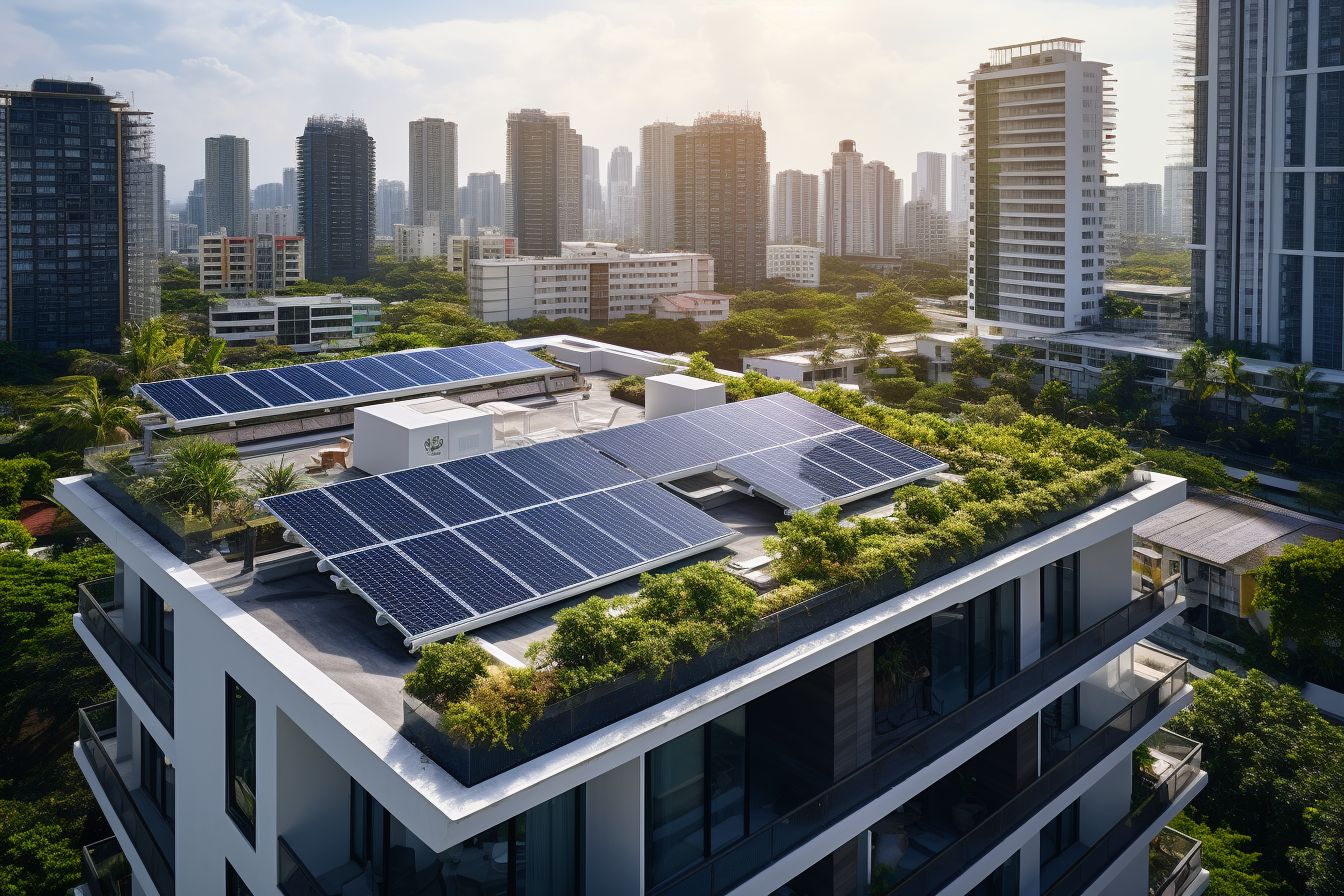
In conclusion, there are various choices available when it comes to energy-efficient roofing options. Metal roofing is highly recommended for its durability and efficiency. Cool roofs made from reflective materials can reduce solar energy absorption and lower building temperatures.
Additionally, using insulation and cool roof coatings can further enhance the energy efficiency of existing roofs. By choosing an energy-efficient roof, homeowners can save on costs and reduce their environmental impact while enjoying improved home comfort.
FAQs
1. What are energy-efficient roofing options?
Energy-efficient roofing options are materials designed to reduce heat absorption and improve insulation, such as cool roofs, green roofs, or metal roofs.
2. How can energy-efficient roofing help save energy?
Energy-efficient roofing helps save energy by reflecting sunlight and reducing the need for air conditioning during hot weather, lowering electricity bills and decreasing carbon emissions.
3. Are energy-efficient roofing options more expensive?
While some energy-efficient roofing materials may have a higher upfront cost than traditional ones, they can provide long-term savings through reduced energy consumption and maintenance costs.
4. Can I install an energy-efficient roof on any type of building?
Yes, you can install an energy-efficient roof on various buildings, including residential homes, commercial buildings, and industrial facilities.
5. How do I know which energy-efficient roofing option is right for my building?
To determine the best option for your building’s needs, it is recommended to consult with a qualified roofer who can assess factors like climate conditions, budget constraints, and specific requirements before making a recommendation.

